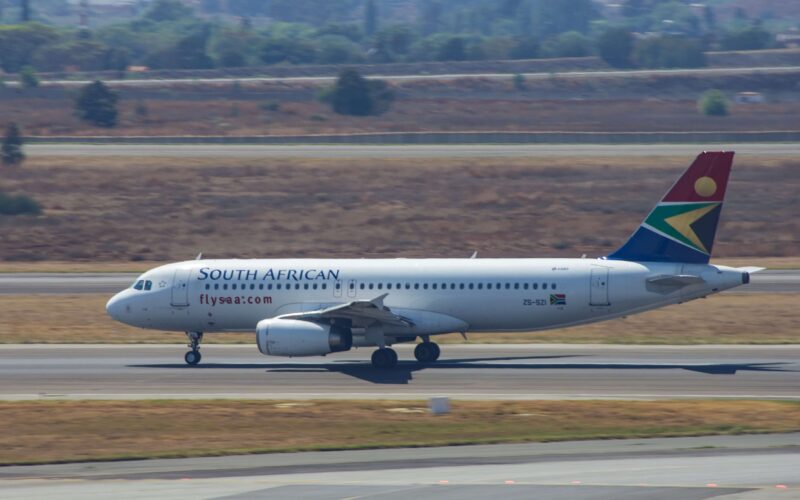South African Airways (SAA) takes to the skies once again following its long-awaited return to operation.
The airline’s schedule commenced with flight SA317, which took off from Johannesburg O.R. Tambo International (JNB) to Cape Town International (CPT) with 123 passengers on board. Flight SA343 took off on the same route and was operated by the airline’s Airbus A320. Flight SA357 is scheduled to depart on an Airbus A319.
SAA 317 JNB – CPT took off this morning with 123 passengers on board ✈️. Thank You for your continued support. #FlySAA pic.twitter.com/94yiSNQSx7
— SAA – South Africa (@flysaa) September 23, 2021
From September 27, 2021, the airline will begin its intra-continental schedule to major African capitals in central and southern Africa, namely Accra, Ghana, Kinshasa, DRC, Harare, Zimbabwe, Lusaka, Zambia and Maputo, Mozambique.
In a recent statement from the airline, SAA Board Chairperson, John Lamola praised the efforts of SAA staff preceding the relaunch of the flag carrier. He also acknowledged the responsibility and national expectation of the now solvent airline.
Lamola states: “It is due to the wonderful trait of resilience that we South Africans are known for, that we have been able to reach this point of SAA rising from the ashes as a solvent company.”
Lamola proposes that the airline’s return will provide more flight options for passengers by inciting price competition and addressing the reduced capacity from local airlines.
He continues: “Since SAA went into and then out of business rescue, there has been less local capacity and that means tickets have become more expensive. Our return to the skies will mean more competitive pricing and will enable more South Africans to fly.”
For well over a decade, SAA has garnered a reputation for creating losses. Subsequently, the airline’s return to operation was an uphill battle. The airline spent almost 15 months in administration following its entry into business rescue on December 6, 2019.
However, after undergoing restructuring of its business model, which saw the airline significantly reduce its debt and cut its workforce by approximately 80%, SAA exited business rescue on April 30, 2021. Soon after, the airline secured a new strategic equity partner.
With the backing of Takatso Consortium, a 51% SAA shareholder led by industry veteran Gidon Novick, who is also Co-founder of recent startup, Lift Airline, and former CEO of Comair, SAA can now move away from its prior legacy model, which was notorious for its dependency on government fiscus.
Lamola says: “As a global airline, SAA will no longer be constrained by the complexities of state governance and have the competitive agility of a partially privately-owned business.”
Today, South African Airways operates a fleet of eight aircraft, compared to a previous fleet count of 32. Despite ongoing travel restrictions caused by the COVID-19 pandemic, the airline received positive demand for its regional and intra-continental flight services prior to its relaunch. However, there are some signs that further fleet restructuring will be required if the airline is to compete on international routes.
Prior to entering administration, the airline served international routes to cities such as Beijing, Buenos Aires, Hong Kong, London and Frankfurt. The airline’s long-haul capacity is enabled by a fleet of Airbus A330s and A340s.
Thomas Kgokolo, Interim Chief Executive Officer at South African Airways, recently noted that fleet modernization would be the key to SAA becoming more competitive on its former international routes.
According to Bloomberg, Kgokolo said: “If we get the right fleet for those particular trips, we should be able to minimize costs and become competitive.”

